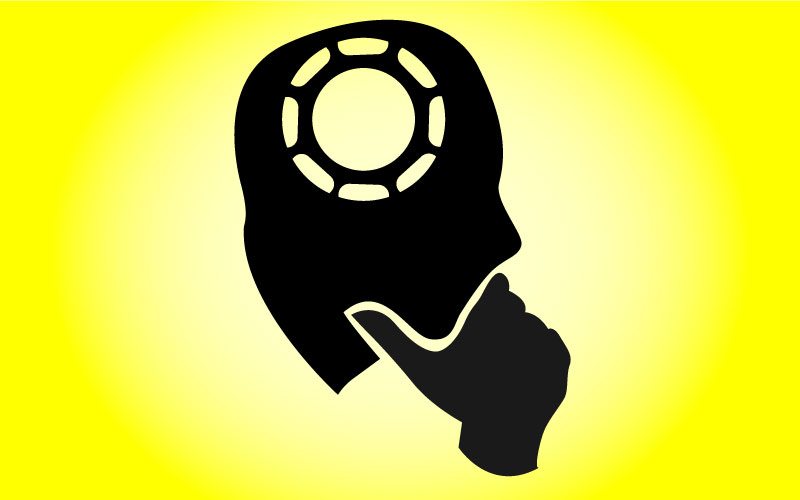This is the first of a series of poker articles that I’ll be writing each week here at FlopTurnRiver. The objective of this article is to present what I think is an excellent approach to studying poker that will be central to my future articles.
The Problems Players Face
I’ve worked with a lot of people who have wanted to learn how to play better poker, and almost every single one of them faced the same set of difficulties when it came to figuring out where to start. Studying poker is tricky to begin with because there is no obvious structure to how you should learn. It’s also easy to get discouraged since it’s very difficult to measure your progress because of the variance in the game. People from our generation have been trained to want immediate results, and since learning poker cannot give us any, this means that we’re working against ourselves from the beginning. These are only some of the problems that plague new players who set out to try to get better, and my objective here is to lead you in the direction of some solutions.
My Solution to These Issues
My solution to the majority of the problems listed above is a big change in how you study poker. There is a pattern that I’ve seen that has separated microstakes players from players who move up through the stakes at a steady rate, and I would like to share that pattern with you here: Players who focus on individual topics for longer periods of time almost always perform better than players who jump from topic to topic without any in-depth study.
Here’s a basic idea of how this works. By studying a single poker situation (eg: continuation betting, 3-betting, facing river bets) deeply, you get to learn about the factors that drive that situation. These factors are ultimately the basic elements of the game of poker like pot odds, sizing bets, putting players on ranges and things of that nature. Once you move on to studying a different type of situation, your understanding of the “elements” will have naturally improved. The result is that your study of the next type of situation will come easier, and your growth will accelerate.
Studying Situations Instead of Individual Elements
Some people recommend studying the individual elements of poker first. For example, someone might want to do an in-depth study of putting players on ranges followed by studying bet sizing. While this method can be effective, I think that starting with a basic type of situation will yield a higher success rate. For example, I think that it will be much easier for a player to learn about bet sizing in the context of continuation betting than to try to look at bet sizing in a general sense. I think it’s easier for most players because the situation creates a context for the individual elements of poker. With this approach, players feel like they are actually accomplishing something instead of studying abstract concepts that they do not know how to apply.
Studying a topic like bet sizing in general can become boring and tedious very quickly, and I think this is why Theory of Poker suffers such harsh reviews from people who try to pick it up for the first time. While it’s a very important book that covers critical topics, it’s also an extremely dry read that will likely put you to sleep if you aren’t already familiar with its contents. Overall, it’s difficult for a player to study the elements individually for practical reasons, and that’s why I suggest studying poker situations instead.
Creating a Structure for Learning Poker
So our idea is that we want to study individual types of situations that come up, and we want to study them in a lot of detail. I’m going to give an example of a way that you could study based on the ideas that I have presented above. This is based on an approach that I described to an FTR member a couple of months ago when he asked me how he should work on understanding continuation betting. I’ll stick with the example of c-betting, but the same process can be applied to any other basic type of situation like 3-betting, double barreling, facing a c-bet, etc.
Step 1: Pick out 20 hands where you had the option to continuation bet. Analyze the spots individually on your own with a lot of depth. Here I would suggest that the player breaks down his opponents’ ranges, his own range and how the player thinks he should play his range.
Step 2: Discuss your analysis of each of these hands with other players. Take notes based on your discussions using tools like the forums, the chat room, private messages and other forms of communication.
Step 3: After the discussion of your analysis is complete, try to break down the situation in general terms based on the basic factors that go into your decision. For our example of continuation betting, you might note that you have to consider the flop texture, the bet sizes, how the opponent plays to a bet or check, and the remaining stack sizes.
Step 4: Go back and review each of the 20 hands in the context of the factors that you looked at in step three. The mistakes that you made in the hands, or the correct plays that you made, should really stand out to you based on the factors that you listed. You should be able to use these factors to create logical and easy-to-understand arguments for every single one of your decisions in those hands.
The End Result of Using This Process
When you jump around across different topics, you never learn anything deeply. The approach that I have outlined above is based on the premise that the only way to internalize the core concepts of poker is to study them on a deep level. Because studying the individual elements of poker is almost always dry and boring, I think that studying them within the context of specific types of situations (like facing 3-bets, double barreling, blind stealing) has better results for players.
Questions or comments?
Discuss this article in our forum: https://www.flopturnriver.com/pokerforum/beginners-circle/%5bspoonitnow-strategy%5d-process-learning-poker-194543.html
Submit your review | |










